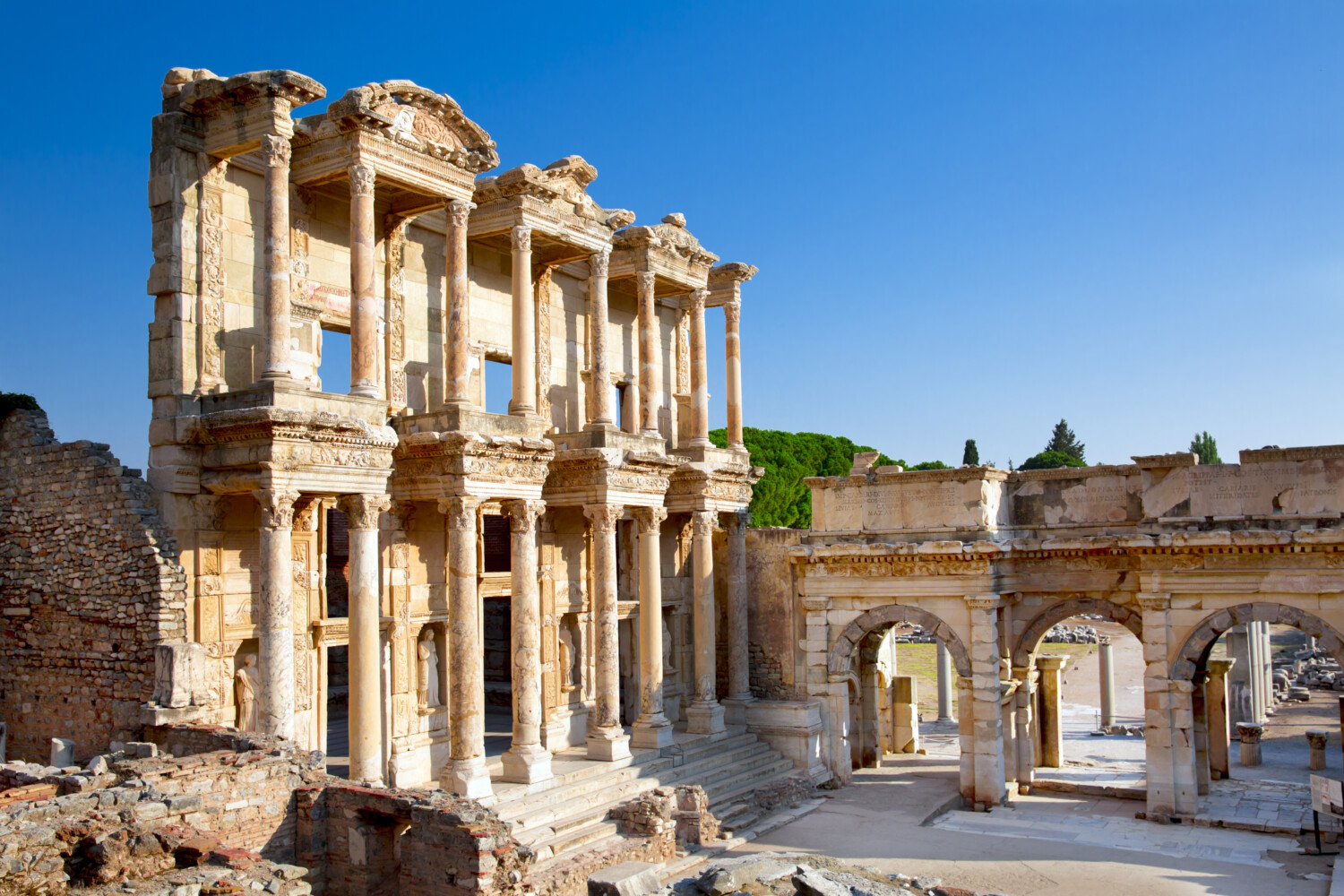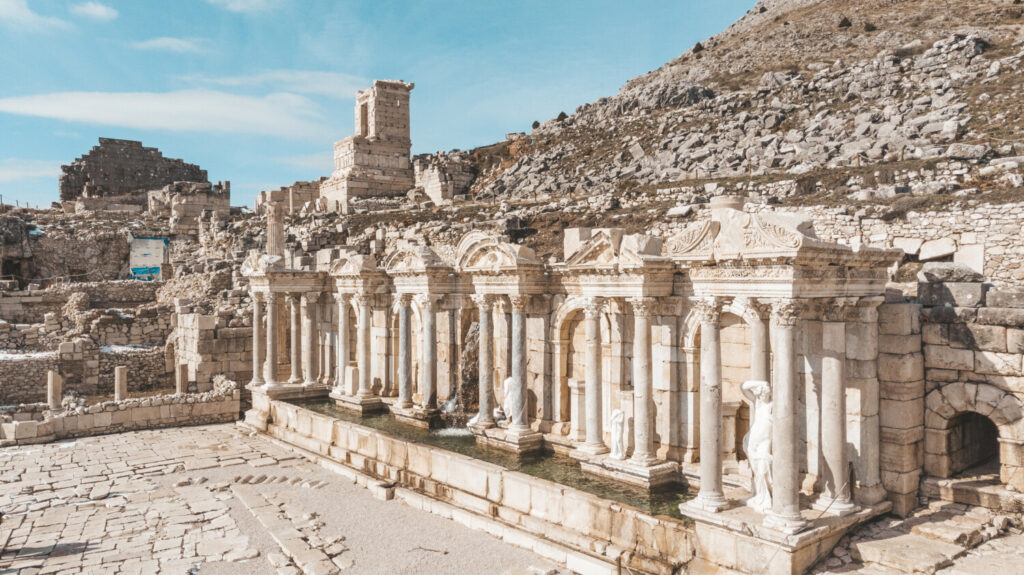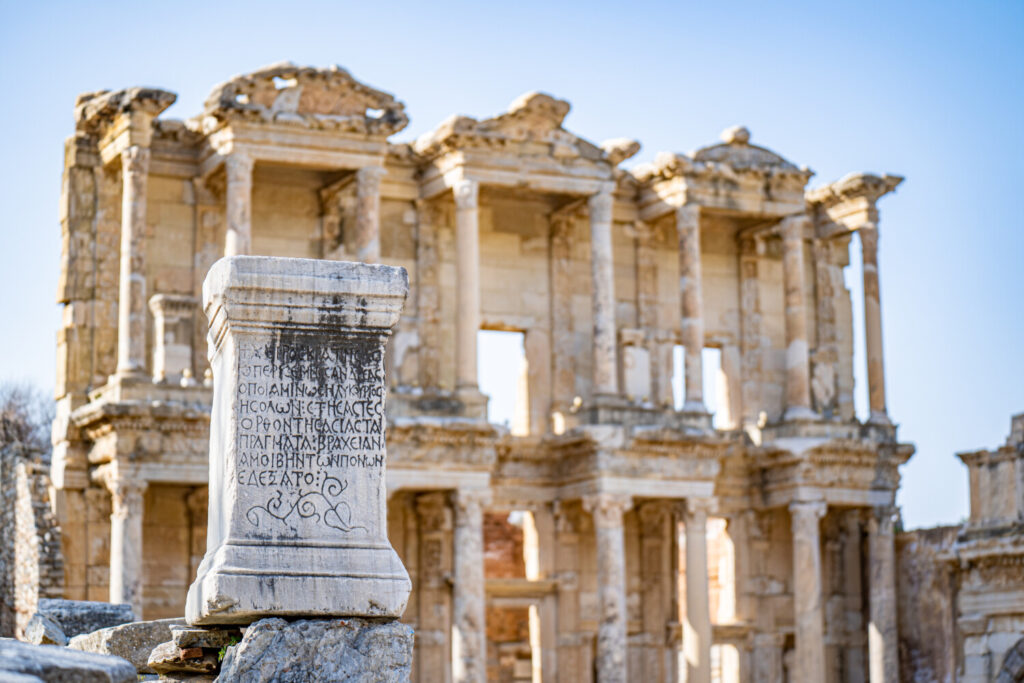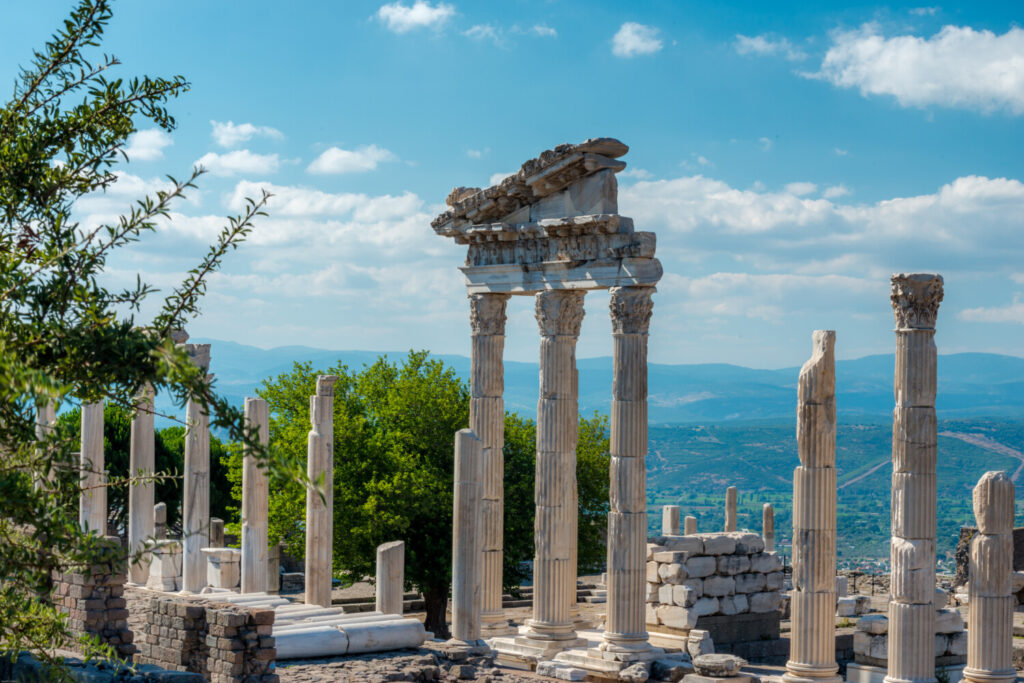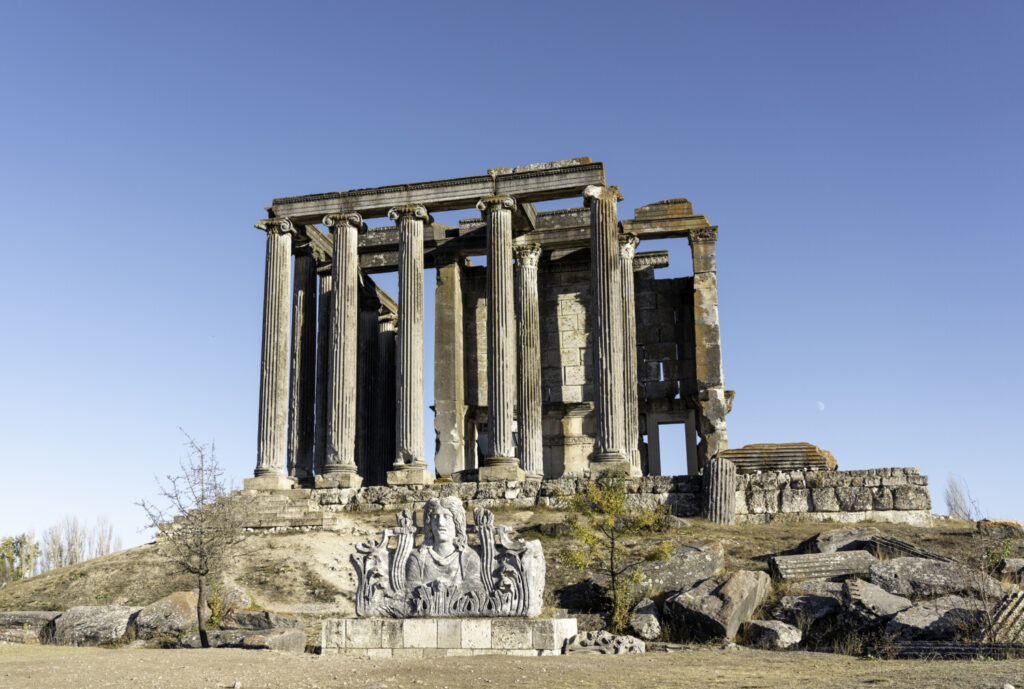Beautiful beaches, elegant historic cities encircled by olive fields, and a unique cuisine honouring olive oil’s wonder…The Turkaegean, also known as Türkiye’s Coast of Happiness, is a vacationers’ paradise, offering a variety of tourist services, Blue Cruises and sailing opportunities, as well as a delectable, locally-inspired cuisine, all set amidst breathtaking surroundings. The most potent emperors of ancient history constructed cities along these old Aegean trade routes, and the most significant historical changes of the ages also occurred there. Let’s investigate the area’s mysterious past.
Setting for an Epic Tale: A Journey through Troy
Located in Çanakkale’s Tevfikiye village, The Ancient City of Troy is one of the most important ancient cities in the world and is among the Turkaegean’s most intriguing destinations. Featuring nine archaeological layers and an uninterrupted 3,000-year history, the Ancient City of Troy was included on the UNESCO World Cultural Heritage List in 1998. This ancient site is also the first stop on the Aeneas Route, the Council of Europe’s first and only cultural route beginning in Türkiye. The outstanding Troy Museum, recognised with Europe’s most prestigious museum awards, hosts a collection of artefacts and finds from the excavations in the region. The Ancient City of Assos is set in the charming Aegean village of Behramkale, atop a hill with a terraced descent overlooking the sea. Another treasure of the North Aegean waiting to be discovered, this ancient city is home to the Temple of Athena, built on the highest point of Assos. Some other ruins in Assos include the old city’s agora, gymnasium and theatre. Some of Assos’s most renowned inhabitants included Aristotle, who founded his famous philosophy school there before travelling to the Macedonian Palace to teach Alexander the Great.
Treasures of İzmir
Any discussion of ancient cities in the Turkaegean will include the Ancient City of Ephesus, which attracts thousands of local and foreign tourists each year. Ephesus, a UNESCO World Heritage Site since 2015 and one of the largest port cities of its time, flourished during the Hellenistic and Roman periods. The Celsus Library, Türkiye’s largest with a capacity of 30,000 visitors; the ancient theatre; the Gate of Mazaeus and Mithridates; the Temple of Hadrian; and the Temple of Artemis, one of the seven wonders of the ancient world are among the highlights of Ephesus, as are the “terrace houses” that show how wealthy Roman families lived. You can also visit the House of the Virgin Mary, the Tomb of St. John, and the Cave of the Seven Sleepers while in Ephesus.
Bergama, in İzmir, is another ancient city on the UNESCO World Heritage List. An important centre during the Hellenistic, Roman and Byzantine periods, Bergama was home to another of the seven significant churches mentioned in the Book of Revelations. Structures in Pergamon that have survived to the present day include the Temple of Athena, the Trajaneum, and the Library of Pergamon. A walk from the Upper Acropolis to the modern city of Bergama offers panoramic views of the entire city from the hillside. Known today as the “Red Basilica”, the Temple of Serapis is another highlight of Bergama.
Along with the famous ancient cities on the Aegean coast, many ancient settlements are in the region’s interior. These cities include Aizanoi Ancient City in Kütahya and Sardis Ancient City in Denizli, both on the UNESCO World Heritage Tentative List. Another outstanding monument in Denizli is the Ancient City of Hierapolis, which, along with the Pamukkale Travertines, was added to the UNESCO World Heritage List in 1988 as a cultural and natural heritage. In Burdur, on the way to Aydın, you can see the UNESCO-listed Aphrodisias and the stunning Sagalassos Ancient City.
Muğla is where the Aegean ends and the Mediterranean begins. With hundreds of ruins in this beautiful city, you can travel eight thousand years back in time – Muğla is home to several ancient towns, including Kaunos, Knidos and Tlos. On this well-known route, you can visit the two ancient cities of Xanthos and Letoon, adjacent to each other and both on the UNESCO World Heritage List. In Xanthos, the former capital of Lycia, you can see Lycian tomb monuments dating from antiquity. On the way to Datça, a quiet town in Muğla, you can visit the ancient city of Knidos, set at the confluence of the Aegean and Mediterranean seas. In Knidos, a city of culture and art and an essential old trade centre, you can observe where the Aegean and the Mediterranean meet from the city’s magnificent theatre – and embrace the magic of this unique geography where history was written.

